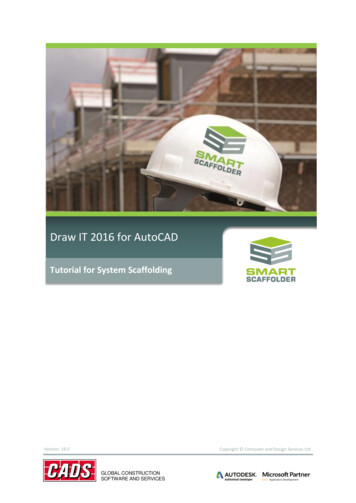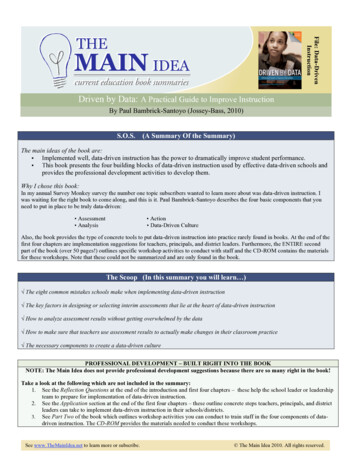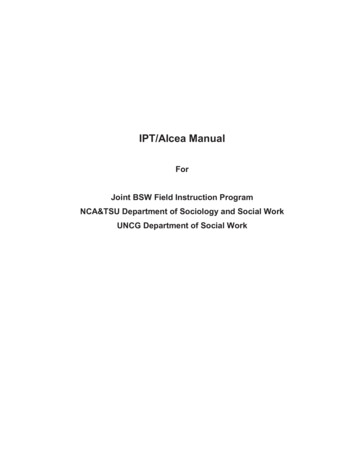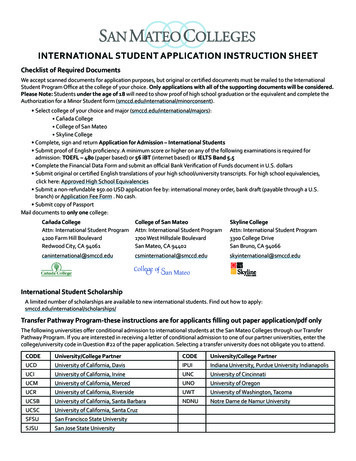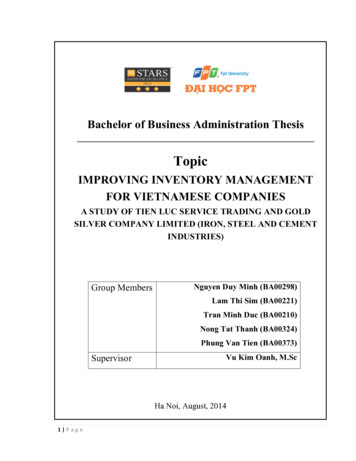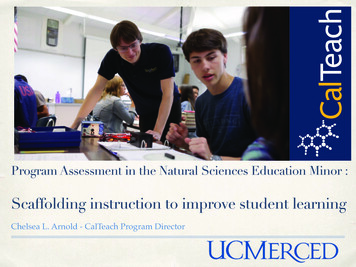
Transcription
Program Assessment in the Natural Sciences Education Minor :Scaffolding instruction to improve student learningChelsea L. Arnold - CalTeach Program Director
About the NSED minor Program housed in School of Natural Sciences Designed to introduce students of all majors to a career teachingscience and/or math 24 units of coursework Covers all of the prerequisites for a post-baccalaureate teachingcredential program Provides student financial support in the form of testingreimbursement, travel reimbursement to and from fieldwork andscholarships
Coursework: Introduction to teaching elementary, middle or high schoolscience and math (NSED 23/33, NSED 43/53, NSED 63/73) Introduction to elementary, middle or high school fieldwork inscience and math (NSED 24/34, NSED 44/54, NSED 64/74) Adolescent Psychology Course covering US Constitution (POLI 1 or HIST 16) Upper Division Writing Classroom Interactions-Focus on Equity and Diversity in Ruralschools (NSED 120) Project-Based Instruction (NSED 100)
How do you begin to create a “teacheridentity” in undergraduate students?(And how do you know you are successful?)1. Begin with introductory fieldwork/seminar series to buildconfidence2. Develop skills in upper division credential coursework3. Encourage participation in conferences, workshops, and otherprofessional development experiences4. Work with mentors who give them valuable advice andguidance
“Type a quote here.”
Introduction toteaching elementary,middle or highschool science andmathIncludes a seminar and 30 hours of fieldwork in the local area schools. (Students in minor are required to do twosemesters)At first students just randomly completed any two of the three offered courses.Problems: (2007-2011) No common lesson plan rubric for all lower division classes No way to measure growth of student from one class to the next No commonality between coursesUpon evaluation of student success and progression, we instituted a scaffolded system to improve studentsuccess.
Scaffolding instruction in lowerdivision courses*Tier 1 student - first lower division course - common readings, begin withobservations, working in small groups with mentor teacher lead, develop first 5elesson plan*Tier 2 student - second lower division course- common readings, help withinstruction (warmups), lead group discussions, develop second 5e lesson plan Changes made to course curriculumCommon readings for Tier 1Common readings for Tier 2Common lesson plan rubric for Tier 1Common lesson plan rubric for Tier 2Common Tier 1 fieldwork assignmentsCommon Tier 2 fieldwork assignments
Results from first year ofdeploymentAll students wereconsidered Tier 1 for thefirst yearProblem: we realized thatinstructors graded verydifferently even though rubricswere common .
Results from secondyear of deploymentRubrics werecalibrated forconsistency andhad to be adjustedto reflect facultyexpectationsStarting to see ashift to highergrades indicatingprogression fromTier 1 to Tier 2
Concluding remarksScaffolding instruction creates an environment of growthThis growth can be documented by both direct and indirect evidenceCreation of a “teacher identity” in part relies on meaningful sequentialexperiences that help build confidence and understandingFuture plans Capturing student growth in other meaningful ways Tier 2 assignment where students reflect on theirTier 1 lesson plan and feedback from theirmentor teacher with their Tier 2 lesson plan/feedback Building of a “portfolio” of student work to showgrowth
About the NSED minor Program housed in School of Natural Sciences Designed to introduce students of all majors to a career teaching science and/or math 24 units of coursework Covers all of the prerequisites for a post-baccalaureate teaching credential program Provides student financial support in the form of testing rei
